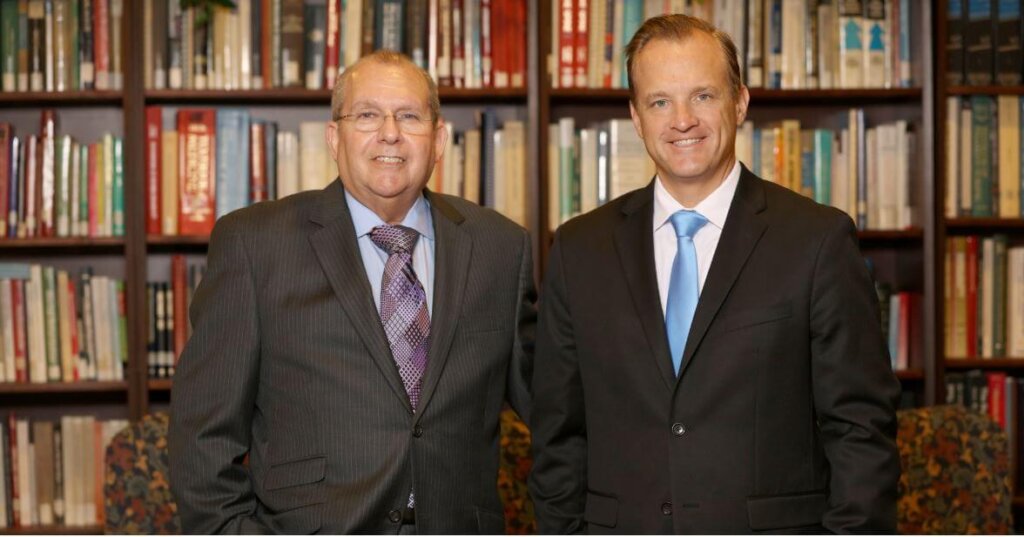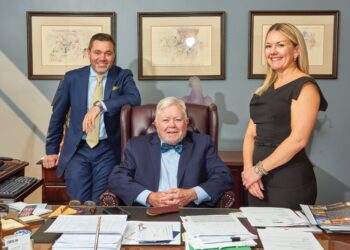Courts have long sought the specialized knowledge of life care planners and vocational experts so that factfinders are better able to understand the long-term effects of non-catastrophic and catastrophic injuries as well as the associated economic damages of such cases.
It is important to understand that when choosing a life care planner two factors may override all others in making a decision. First, does the life care plan represent a document which answers questions rather than raises them? Is it clear, understandable, well documented and well presented? Second, does the life care planner have a reputation for being able to present this information in an understandable fashion to all parties concerned, from the report, through deposition and into trial? The most knowledgeable experts will do little good if they are unable to communicate that knowledge to the individuals and juries to whom the information must be directed.
Known as the “Father of Life Care Planning,” Paul Deutsch Ph.D. has joined with Arizona-based life care planner and vocational expert Robert P. Tremp Jr. MA, CRC, CLCP, LAC to form a joint office located in Phoenix. Tremp, whose CV includes numerous degrees and certifications, has been providing state and federal court expert testimony in Arizona for several years.
Tremp makes his home in Arizona and has expanded his capabilities with the merger. The unique and highly specialized services this partnership provides, are sought by plaintiff and defense firms around the world, while each maintain offices in Arizona and Florida. Additionally, Tremp’s brother, who operates out of the firm’s Michigan office, offers expert economic opinions in the form of calculating the economic damages set forth by the life care plans and vocational damages to present value.
The paths of the partners first crossed in 2004, when Tremp attended a course Deutsch was teaching.
“At that time,” Tremp recollects, “Dr. Deutsch told all of the students, ’I know none of you are going to do this, but stay in touch with me as you progress,’ I still have that in my notes. And you know what? Through the years, if questions arose, I would contact him. To me, it was astounding that a man of his reputation and stature would actually take time out of his busy schedule to take my call and offer me advice. So many experts are guarded with their practice and don’t necessarily wish to ’help the competition,’ or mentor the ’new generation,’ but he was always there. Not only that, he gave explicit permission to utilize his methodologies.”
More than a decade later, Deutsch and Tremp have reconnected, this time the student/teacher relationship has evolved into a meeting of the minds. The two come together as peers who share enthusiasm and interest in the same field.
Joining forces, Tremp and Deutsch find they each bring their own unique viewpoints and strengths, which always solidifies a great partnership.
“I think it’s important to note,” says Deutsch, “that having retired from providing testimony, I’m very selective and quite particular about who I work with. Rob dedicated two years to working with me, so I had the opportunity to really get to know him, his values and his beliefs. I could have said at any time, ’No, he’s not the right person,’ but I was looking for someone who would be excellent and ethical, someone I would eventually be willing to sell the firm to and he fit the bill perfectly.”
“For my part,” Tremp says, “it was a rare opportunity as Dr. Deutsch is arguably the most well-known damages expert by the national and international legal community and most published.”
As partners, Tremp and Deutsch have developed long-term relationships with attorneys, physicians and patients in more than 67 cities throughout the United States and approximately 33 countries around the world.
“In fact, we’ve just received several cases from Europe,” Tremp adds.
Since 1976, Deutsch has been a leader in the field of life care planning, education, research and rehabilitation services. Deutsch is best known for having developed the basic principles, tenets, methodologies and processes of life care planning.
He first published on life care planning as a fundamental tool of case management in his 1981 multivolume text, “Damages in Tort Actions.” Deutsch has contributed 12 volumes and more than 95 peer-reviewed journal articles and chapter contributions including “A Guide to Rehabilitation” and “Innovations in Head Injury Rehabilitation.” His work has been fundamental in the development of life care planning as a transdisciplinary subspecialty throughout rehabilitation.
Deutsch has written and spoken extensively on withstanding a Daubert challenge in federal court. In short, according to Deutsch, it can be done. Many challenges under Daubert and Frye have occurred and have been successfully overturned. In several instances these challenges were lost and in each instance, these occurred because the life care planner did not follow the methodology. That is, these professionals relied only upon their own expertise and usually were found to have overstepped that expertise by entering into the medical arena or the psychological arena and making a diagnosis they were unqualified to make or future care recommendations only a physician could make.
In order to exceed the demand of the Federal Rules, Deutsch, through his own peer-reviewed and published research, has focused on developing and refining the reliability and validity of the life care planning process. In recent years, this focus has spotlighted improving the manner in which case management, medical and psychological foundations for the plan are established. His recommendations for clinical practice guidelines, research literature, and effective collaboration with consulting physicians are all used to document recommendations while establishing the necessary foundation for the life care plan and vocational damages.
Tremp noted he is excited to participate with updating “Deutsch’s Guide to Life Care Planning and Disability Management,” a new four-volume, 5,000-page treatise on disability and life care planning which is currently underway. Tremp made note of the importance of the above project secondary to the dynamic and ever-changing rehabilitation field.
“You have to know more than just rehabilitation,” says Tremp. “We have to be aware of so much more than the patient’s basic needs, we have to know about the economy, labor force characteristics, new technology, medical aspects of disability, as well as specifics such as family dy namics, gender specific issues, cultural considerations of the injured party, and more.
“Doctors look at patient’s essentially based on their disease or affliction,” he continues. “To us, not all spinal cord injuries, brain injuries, amputations, etc. are carbon copies. So many more aspects must be considered in order to truly serve the patient’s and their family’s long-term care needs and that is why the guide is so important to our industry and ultimately the injured party.”
According to Tremp, plaintiff and defense attorneys are sometimes hesitant to bring in experts when they think a case is “not big enough” for a workup. “I hear it all the time,” he says. “They may think an injury isn’t severe enough to warrant a full-blown life care plan. Equally, on the defense side, attorneys often realize they have a last minute disclosure situation and refer the case too late, giving little time for a professional to assemble a counterpart’s damages report.”
Tremp says that no case is too small. “Even non-catastrophic cases like soft tissue or chronic pain can entail a rehab plan,” he says. “Smaller cases generally mean a smaller scope and a smaller budget, but they’re still deserving of full efforts. I find attorneys appreciate knowing the depth of damages in a pre-suit manner in order to enhance settlement negotiations.”
With offices in Arizona, Michigan and Florida, Tremp and Deutsch are on hand to serve your needs. Tremp is also excited to announce that they will soon be joined by another certified life care planner who is also a physical medicine and rehabilitation doctor. The future looks bright.







